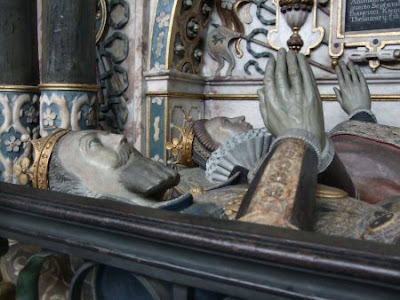
Life Watching The Winter’s Tale at the RSC wasn’t the only occasion I became sentimental on the trip. The other was in Warwick at the Collegiate Church of St Marys. One of the most important religious buildings in the country, it betrays all of hallmarks of church history, having been built and rebuilt over the years. The crypt is the original Norman structure from when the land was originally consecrated in 1123. It’s especially famous because of its Beauchamp Chapel, constructed in the Fifteenth Century to house the tomb of Richard Beauchamp, the Earl of Warwick and “one of the richest and most powerful people in the history of our country” [source].
And it is beautiful, as regal and colourful as you’d imagine Egyptian burial chambers must have been before time and grave robbers intervened. I was already suitably impressed and then I bothered to read the guide leaflet and one of the plaques for confirmation and yelped. For this is also the final resting place of Robert Dudley, Earl of Leicester, his wife, his brother Ambrose Dudley, Earl of Warwick, and his son. And Dudley’s important because he’s the man Elizabeth I would have married given half a chance if duty and political intrigue hadn’t intervened. If you’re a fan of the period he’s one of the figures who looms large.
But all too easily we forget that these people really existed, history with the help of film and television and indeed the revisionism of historians spinning off and winding itself into its own fiction. Only in situations like this are you reminded of the reality and here I was standing within his final resting place and amongst his immediate family, which is about as realistic as these things can become. I was, to use a good Liverpudlian word, gutted and in a way which hadn’t happened at Shakespeare’s birthplace, presumably because I’d been prepared for that and because he isn't commemorated by an effigial tomb (pictured) which illustrates the man in such a vital manner.

No comments:
Post a Comment